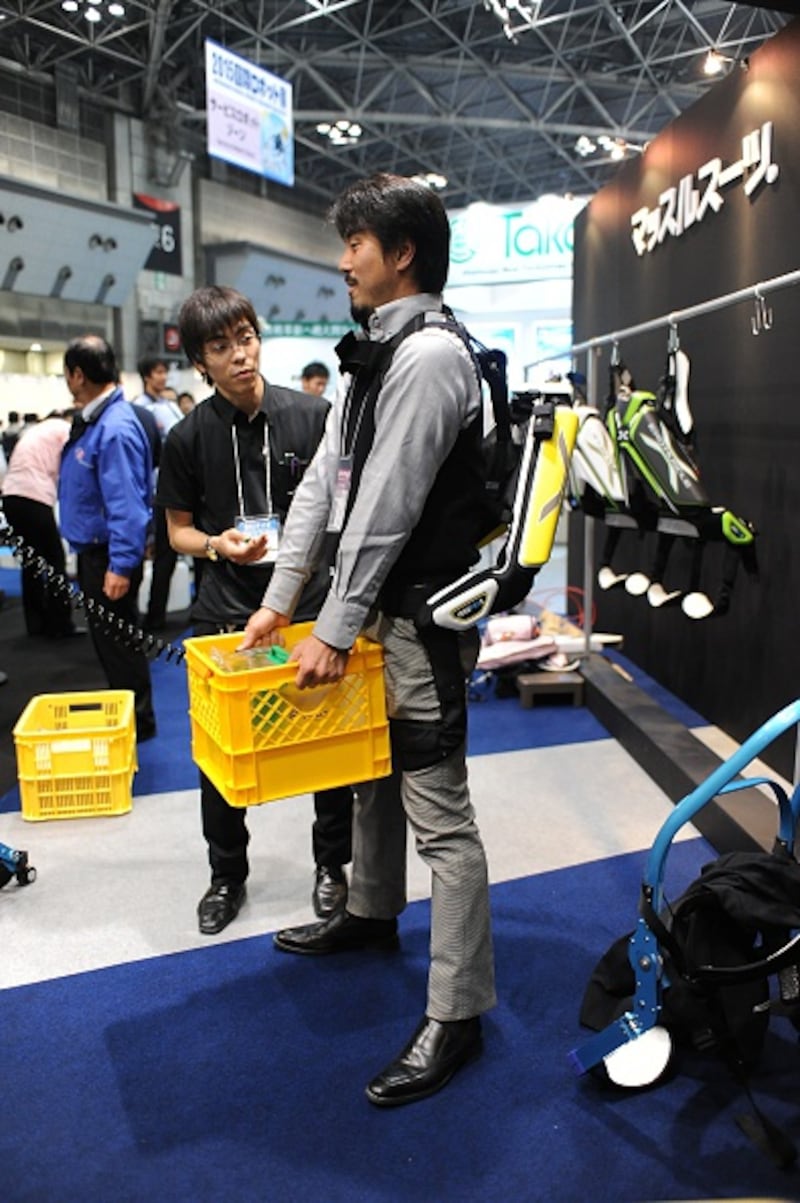Interviewing a robotics expert who is focused on all the shortcomings of current exoskeleton research is a little like listening to someone tell you all the reasons why the people of Atlantis deserved to sink to the bottom of the ocean. The question "So this is actually a real thing?" crosses the mind more than once.
Exoskeletons are indeed a thing, and have been around in various guises for a long time. Since the second World War, the idea of a powered exoskeleton – with electrical, hydraulic and/or pneumatic actuators – that could give mere mortals superhuman strengths has been a serious goal for the US military.
What’s so intriguing about this goal – which on the surface sounds more like a teenage boy’s fantasy than the priority of a global military superpower – is that, if successfully realised, it could provide surprisingly practical benefits for more than warmongers.
"When we get old, exoskeleton technologies, that had originally been developed exclusively for military settings, will help us walk," says Prof Luis Sentis from the the Human-Centered Robotics Lab at the the University of Texas, Austin.
Skeleton staff
It's not just "men who stare at goats" working in this space, either. Industry innovators have clearly been thinking about the potential of exoskeletons for decades. What's different now is that companies are beginning to develop serious product lines. "I recently attended Wearacon in Arizona, the biggest exoskeleton conference in the world," says Sentis. "Commercialisation is really happening."
This is reflected in the growing industrial market for the technology. “I’m working with some companies [that for now must remain anonymous] to develop a completely new line of industrial exoskeletons for use in construction settings, or at airports, so that workers can hold, move and operate heavy tools and equipment for longer periods,” says Sentis.
The kind of work that, heretofore, has led to many back injuries will become a doddle once workers can offload the weight they carry on to their tailored exoskeleton.
But sadly, lower-back pain is here to stay for the foreseeable future. Despite all the interest, expertise and resources being invested in exoskeletons, Sentis – one of the world’s leading experts in this field – believes the technology is still critically flawed.
“So far we are yet to really achieve the goals we’ve set for ourselves,” he says.
The way he describes things, if the exoskeleton had any more issues, it’d be on Prozac.

“The first challenge is transparency,” he says. “By this I mean you still actually feel like you have an exoskeleton on you, which is not ideal. They’re comfortable, but an exoskeleton should result in a feeling of lost mobility, that one is preserved in a whole-body experience. It should feel natural.
Why should being capable of performing blatantly unnatural powers feel natural? “Because it’s critical we figure out how to maximise one’s versatility while wearing any suit. You might need to kneel down, bend over, or perhaps you trip and fall while wearing one. Those kinds of movements still don’t naturally conform with those of the human body.”
Eliminating drag
More work is needed in terms of reducing, and ultimately eliminating, drag. Every time you move your leg, it doesn’t follow you in real time. The device is not yielding to one’s natural movement. “You have to drag it, leading to latency.
There are also shortcomings in robust environmental awareness to be overcome. “Exoskeletons still have a hard time knowing what they are coming into contact with, be it hard ground, sand, grass, mud or some other surface. This negatively impacts how effectively it can operate.”
Not unlike the challenge faced by wind-energy producers to reduce the amount of power it takes to efficiently operate wind farms, wearing and operating an exoskeleton still takes more effort than not wearing one at all. Designers of the emperor’s new exoskeleton clearly have a few more creases to iron out.












